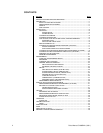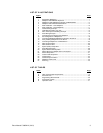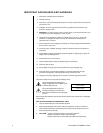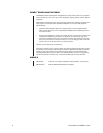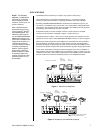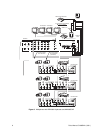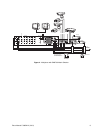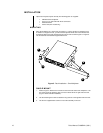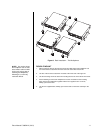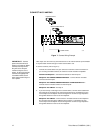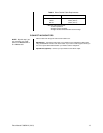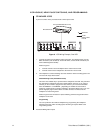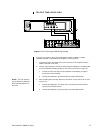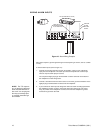
Pelco Manual C1995M-A (10/01) 5
DESCRIPTION
WHAT IS A VIDEO MULTIPLEXER?
A four-channel (or quad) multiplexer lets you record pictures from up to four cameras on a
single VCR. You can also watch up to four cameras simultaneously on one screen, either
live or in playback. For closer detail, you can choose full-screen viewing without losing
detail (as occurs with “quad” devices that compress four pictures into one recording).
The multiplexer acts as an interface between the CCTV cameras and the VCR. It switches
between cameras much like a sequential switcher, except a multiplexer must switch at
exactly the same rate as the VCR is recording so just one video picture (field) is recorded
from each camera before it switches to the next camera. The reason is that, with several
cameras, you need to switch as quickly as possible to minimize the time gap between
successive pictures from a particular camera.
Recording can be done on regular or time-lapse VCRs. Time-lapse VCRs are similar to
regular VHS recorders except time-lapse VCRs can record as many as 960 hours of video
on a single T-120 (two-hour) VHS cassette. Even the lowest cost models have longer
recording times than a regular VCR.
If you connect one camera to a multiplexer and record at two-hour speed on a time-lapse
recorder, motion appears normal when you play the tape. But as you add more cameras to
the multiplexer, it must switch between cameras, allowing a gap in the pictures recorded for
any one camera. The more cameras, the longer the gap. Motion on playback becomes
jerky because of missing video.
Not only does the number of cameras affect the time gap, so does recording speed. The
slower the speed, the longer the gap. Normal recording speed for full motion is two-hour
mode. Recording 12, 48, or 960 hours of video on a two-hour tape means a lot of video is
left out.
Thus, the more cameras and the slower the recording speed, the longer the time gap
between recorded pictures for each camera. Also, having both black and white and color
cameras together in a system—rather than just one kind—slows switching. Important video
could be lost.




